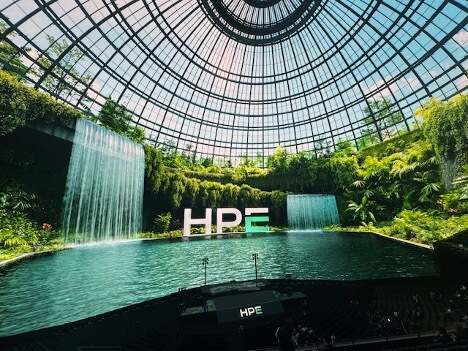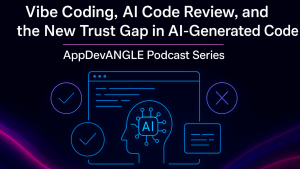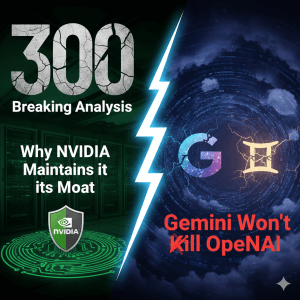
ABSTRACT: At HPE Discover 2025, the company unveiled a comprehensive strategy to lead the enterprise AI era through innovations in agentic infrastructure, intelligent networking, and unified cloud operations. HPE introduced GreenLake Intelligence and AI Factories, expanded ProLiant Gen12 compute with AMD, and confirmed DOJ approval of its Juniper acquisition—all reinforcing its push into AI-native, secure, and sustainable IT. As customers seek to modernize across edge, data center, and hybrid environments, HPE aims to be their full-stack partner for deploying agentic AI at scale.
At HPE Discover 2025, CEO Antonio Neri boldly declared that the enterprise AI era is not a distant future; it’s now. Marking its 10th anniversary since the separation of HP Inc. and HPE, HPE kicked off the event in the Sphere to launch a refreshed brand identity and a unified strategy that enables customers to unlock business outcomes through innovation in AI, hybrid cloud, and secure, intelligent networking. In a keynote packed with announcements, product launches, and customer stories, HPE laid out a vision built around three pillars: intelligent networking, agentic storage, and unified cloud operations, all orchestrated through the GreenLake platform.
From AI factories to liquid-cooled data centers, from Aruba’s autonomous networking fabric to Zerto-powered cyber resilience, HPE presented itself as a full-stack infrastructure partner ready to meet the demands of generative AI, hybrid cloud, and next-gen computing.
Foundation for AI-Driven Connectivity
HPE doubled down on its edge-to-core networking portfolio with a wave of innovations in Aruba. The spotlight was on the Aruba Agentic AI Mesh and Networking Copilot, creating a self-optimizing, AI-assisted network across enterprise campuses, data centers, and even cruise ships and stadiums.
Powered by tight integration with OpsRamp, these agentic networks provide autonomous performance tuning and threat detection across Wi-Fi 7 access points, intelligent switches, and campus fabric.
How Networking is Foundational
HPE emphasized the critical role of networking as the foundation of AI infrastructure and emphasized its continued investment in AI-native networking. Aruba Central is at the core of a unified, secure, and observability-rich infrastructure strategy.
Key updates included the introduction of agentic AI mesh capabilities within Aruba Central, enabling autonomous, multi-agent orchestration to drive real-time diagnostics, remediation, and optimization. These agents, trained on trillions of data points from millions of devices, can identify root causes, simulate remediation outcomes, and provide operators with actionable recommendations, all within a transparent chain of reasoning.
HPE’s networking stack continues to expand across access, campus, data center, SD-WAN, and private 5G domains. The company reaffirmed its strategy to support third-party devices, enabling multi-vendor environments to benefit from AIOps and observability features within Aruba Central. It also highlighted its ability to be deployed in public cloud, private virtual environments, or fully air-gapped data centers. Aruba Central’s “Time Travel” interface and AI-powered network insights were also showcased, along with enhanced device identification, anomaly detection, and energy-saving features to demonstrate how AI can improve user experience and sustainability.
Customer examples, from Carnival Cruise Line’s “smart ships” to Inter Miami’s Freedom Park, showcase how networking innovation translates into elevated user experiences, smarter venue operations, and real-time edge analytics. The anticipated Juniper Networks acquisition would further extend HPE’s footprint into core routing, optical systems, and silicon photonics.
“We’re not just connecting endpoints, we’re building the adaptive, intelligent fabric AI needs to thrive,” said Neri.
HPE & Juniper Acquisition Clears DOJ Hurdle
Just after HPE Discover, and as part of its broader AI infrastructure strategy, HPE announced a significant update: the U.S. Department of Justice has approved the company’s $14 billion acquisition of Juniper Networks, clearing a key regulatory hurdle and setting the stage for the deal to close. HPE will divest its Instant On campus and branch business to satisfy antitrust concerns, but will retain full access to Juniper’s strategic enterprise and AI networking assets.
“Our agreement with the DOJ paves the way to close HPE’s acquisition of Juniper Networks and preserves the intended benefits of this deal for our customers and shareholders,” said HPE CEO Antonio Neri. “For the first time, customers will now have a modern network architecture alternative that can best support the demands of AI workloads.”
Upon closing, the integration will combine HPE Aruba’s edge-to-campus and Aruba Central strengths with Juniper’s Mist AIOps platform, silicon innovation, and data center switching portfolio.
To secure U.S. Department of Justice approval for its $14 billion acquisition of Juniper Networks, HPE has agreed to divest its global Instant On campus and branch wireless LAN (WLAN) business. This we see as not surprising. This divestiture includes all associated assets, intellectual property, R&D personnel, and existing customer relationships, which must be sold to a DOJ-approved buyer within 180 days of closing.
Additionally, the settlement requires HPE to facilitate limited access to Juniper’s Mist AI Ops source code. Specifically, HPE must conduct an auction to license that code in a perpetual, non-exclusive manner, including optional transitional support and personnel transfers to support competition in the WLAN market. This one is a place to watch.
As Neri noted during his keynote, this represents a direct challenge to legacy networking vendors and provides customers with greater architectural choice, especially in the AI data center.
“This marks an exciting step forward in delivering on a critical customer need,” added Juniper CEO Rami Rahim, “a complete portfolio of modern, secure networking solutions to connect their organizations and provide essential foundations for hybrid cloud and AI.”
GreenLake Intelligence: Focus on Operational Agentic Automation Across the Hybrid IT Stack
One of the most forward-looking elements of Antonio Neri’s keynote at HPE Discover 2025 was the unveiling of GreenLake Intelligence, an evolution of the HPE GreenLake platform that introduces a distributed mesh of AI-powered agents purpose-built to manage and optimize enterprise IT operations. This shift marks HPE’s transition from basic automation to context-aware, agentic infrastructure that reasons and acts across compute, storage, networking, and hybrid-cloud layers.
At its core, GreenLake Intelligence is powered by a mesh of domain-specific agents, each fine-tuned with telemetry from trillions of data points, support logs, and real-world IT operations. These agents leverage Model Context Protocol (MCP) to share knowledge, collaborate on incident resolution, and maintain operational continuity across silos—bringing generative and agentic AI principles to the foundation of enterprise IT.
“We are moving beyond AI that simply analyzes and recommends, toward an intelligent, agentic admin workforce,” said Neri. “These AI admins continuously optimize your infrastructure, resolve issues, and even act autonomously, all while keeping you in the loop.”
Key examples of this transformation include:
- Networking agents that detect anomalies and implement fixes across HPE Aruba environments.
- Storage agents that anticipate capacity demands and automatically adjust provisioning.
- FinOps agents that right-size infrastructure to control cloud costs and improve utilization.
- Orchestration agents that deploy VMs and containers in real-time based on cost, latency, and policy needs.
GreenLake Intelligence is tightly integrated with HPE’s Cloud Ops Suite, including OpsRamp, Zerto, and Morpheus, and is designed to be extensible. HPE partners and customers can build their own AI agents to deliver domain-specific services at scale, all within a unified control plane.
This system-wide intelligence transforms IT operations from a reactive, tool-centric discipline into a proactive, autonomous framework. It enables customers to detect, diagnose, and resolve issues faster, with less manual intervention, while aligning IT behavior with business goals and SLAs.
As enterprises face a future defined by hybrid complexity, cost pressure, and AI adoption, GreenLake Intelligence offers a compelling answer: intelligent infrastructure that thinks, adapts, and acts, so your teams can focus on innovation rather than maintenance.
Storage and MCP: Intelligent Storage Infrastructure
Perhaps the most transformative announcement came in the storage domain. The HPE Alletra Storage MP X10000 aims to redefine what it means to store data in the AI age. It’s not just about capacity, it’s about compute-integrated, agentic-supporting storage that transforms unstructured data into immediate input for AI pipelines. Note this is on the object side, not yet available on the file or block side. More about this as theCUBE research delves into data platforms.
With support for the Model Context Protocol (MCP), storage becomes a tool and an active participant in Retrieval-Augmented Generation (RAG) workflows and real-time vector processing. Every object stored is instantly classified, enriched with metadata, and tokenized for immediate AI consumption, no pre-processing needed.
“This is infrastructure that reasons, acts, and accelerates outcomes. It’s no longer just a repository,” said Neri.
The integration with Zerto and Commvault Cloud adds critical cyber resilience, with ransomware recovery, continuous replication, and air-gapped protection to defend the increasingly valuable AI data estate.
Everyone Gets An AI Factory
HPE’s AI strategy comes to life through its AI Factory portfolio, built on GreenLake Private Cloud AI in partnership with NVIDIA. These turnkey, composable systems are designed to deploy enterprise-scale LLMs and AI agents in under 30 seconds, keeping data private, secure, and performant.
The Unleash AI ecosystem enhances this offering with partners like Dataiku, AI21 Labs, and Abel. At the same time, joint solutions with Deloitte and Accenture bring ready-to-run agentic use cases to functions like finance, procurement, and operations. This has seen amazing growth since the introduction of the Unleashed AI ecosystem. Stay tuned for more on this, as this is where customers will see the “value” on top of the AI and HPE Infrastructure.
Recent AI factory deployments include:
- KDDI: Building trillion-parameter Japanese-language models.
- St. Jude Children’s Research Hospital: Accelerating cancer research through real-time AI-assisted discovery.
- AMD, Intel, and NVIDIA: All providing critical silicon for training and inference in ProLiant Gen12 servers and Cray supercomputers.
These efforts mark a shift from AI experiments to operational, production-grade deployments, powered by a vertically integrated HPE stack from silicon to AI agents.
HPE Adds More AMD-Powered Gen12 Servers to Lineup
At HPE Discover 2025, HPE introduced a significant expansion of its ProLiant Gen12 compute portfolio, signaling a strategic commitment to flexible, high-performance infrastructure that supports virtualization, AI, and edge workloads. The update includes new AMD EPYC-powered servers, enhanced Compute Ops Management (HPE COM), and full support for HPE Morpheus VM Essentials Software, underscoring HPE’s effort to provide customers with scalable alternatives to proprietary virtualization stacks.
Two new servers, the ProLiant DL325 and DL345 Gen12, are powered by 5th Gen AMD EPYC processors and deliver up to 6TB of memory, doubling the capacity of previous generations. These systems are purpose-built for memory-intensive workloads, including edge compute, virtualization, and data-rich AI operations. Krista Satterthwaite, SVP and GM of Compute at HPE, emphasized their significance:
“The enhanced HPE ProLiant Compute Gen12 portfolio… drives even greater optimized workload performance, security protection from the chip-to-the-cloud, and a boost to productivity with AI-driven management capabilities.”
Security is also a central theme, with the introduction of HPE iLO 7, which now offers silicon-to-assembly-to-retirement protection, including defenses against quantum computing threats. Combined with AMD’s proven track record in power efficiency and performance, the updated ProLiant line provides customers with trusted infrastructure for emerging workloads.
HPE has now fully enabled Morpheus VM Essentials Software across the Gen12 family to support the shift toward open virtualization. This lightweight, cost-optimized solution helps enterprises reduce VM licensing fees by up to 90%, transition away from VMware lock-in, and modernize their virtual environments with KVM support and integrated Veeam protection.
These enhancements are tightly integrated with HPE Compute Ops Management, the popular HPE COM management interface for the server, delivering a centralized, cloud-based view of all server operations. New features include:
- AI-driven insights to reduce downtime and avoid human error
- Multi-vendor server monitoring with simplified toolchains
- Visual access to health system files for faster root cause analysis
At the edge, HPE also rolled out the DL145 Gen11, now available as part of the HPE Integrated System for Azure Local. This compact, AMD-powered system is designed for space-constrained environments and enables seamless cloud-edge integration across retail, healthcare, and manufacturing verticals.
Cloud Ops Suite: OpsRamp, Zerto, Morpheus Join Forces
HPE also introduced its new Cloud Ops Suite, unifying its software portfolio into a cohesive platform for hybrid cloud operations. The suite tightly integrates:
- OpsRamp for observability and AIOps across multi-cloud and on-prem environments
- Zerto for ransomware resilience, disaster recovery, and mobility
- Morpheus for cloud orchestration, VMware-KVM migration, and multi-cloud workload optimization
HPE’s response to the turmoil caused by VMware’s licensing model under Broadcom was clear: VM Essentials offers a modern, cost-effective alternative with migration tooling and Veeam-integrated backup.
“Customers need control, flexibility, and simplicity—especially when facing unpredictable costs and lock-in,” Neri noted.
With native FinOps automation, integrated telemetry, and support for sovereign cloud use cases, the Cloud Ops Suite positions HPE as a go-to for managing the complexity of modern enterprise IT.
Air-Gapped Offerings for Sovereign Control and Ransomware Resilience
In response to rising cybersecurity threats and growing demand for sovereign cloud capabilities, HPE continues to strengthen its portfolio of air-gapped solutions, designed to provide maximum isolation, control, and recoverability. At Discover 2025, HPE highlighted its embedding air-gap architecture across critical layers of the IT stack, including GreenLake Private Cloud, Private AI, HPE VME, HPE OpsRamp, HPE Zerto for disaster recovery, and the HPE Cyber Resilience Vault. These offerings enable organizations in government, defense, and regulated industries to maintain operational continuity even under extreme threat conditions. Whether protecting against ransomware, safeguarding sensitive workloads, or complying with strict data sovereignty mandates, HPE’s air-gapped environments provide clean, immutable copies of data, rapid failover capabilities, and policy-based recovery workflows. Combined with HPE COM and HPE iLO 7 firmware security and real-time threat detection, these solutions deliver end-to-end protection, from silicon to software to sovereign cloud.
Engineering for Efficiency and Sustainability
AI isn’t just about speed and scale—it’s also about sustainability. HPE showcased advances in direct liquid cooling, digital twin simulation, and heat recapture through partners like Downforce, enabling data centers to reduce cooling power consumption by up to 90%.
In Neri’s words:
“We must design for sustainability from the ground up. That includes everything from chip density to how we reuse waste heat to warm homes…”
Innovation That Starts Inside
Throughout his remarks, Antonio Neri emphasized that HPE’s innovation strategy is deeply rooted in people and culture. With over 250 internal AI use cases across finance, operations, and marketing, HPE applies the same AI tools it sells, using agents and LLMs internally to improve forecasting, automation, and customer support. It was interesting to note that 50 of these are in production.
He also reinforced the importance of upskilling, advocating for “a minor in AI” for every employee and a strong foundational understanding of the technology to stay relevant.
Our ANGLE
HPE has methodically built a full-stack strategy that aligns with how enterprise AI will be adopted, in stages, with modular capabilities, and across hybrid environments. By fusing intelligent networking, AI-native integration for storage, and cloud operations software into an agentic platform, we believe that HPE is carving out a clear path for customers seeking to modernize at speed, without losing control or sustainability focus.
The combination of Aruba and Juniper creates a compelling multi-domain fabric that supports everything from edge AI and smart venues to high-performance AI factory backbones, positioning HPE as a formidable player in the AI-era networking market.
As AI moves from the data center to the edge and into the physical world, enterprises will increasingly require integrated platforms that unify infrastructure, automate operations, and unlock insights in real time. HPE’s announcements underscore its commitment to being a strategic partner in this transformation, unlocking ambition and helping customers discover what’s next.
HPE has its share of technology announcements and innovation at Discover this year, but the actual test of value is always with the customer. That said, we also heard from customers at Discover that the marketing between what was a GreenLake service and what was a standalone solution was a little confusing.
In the AI space of AI Factories, certified Nvidia designs will help accelerate deployments. We still have questions about how HPE will realize more margin from AI Factories, which do not heavily differentiate above the infrastructure. We look forward to hearing from customers who use the Agentic AI capabilities of GreenLake Intelligence across the portfolio, with HPE Aruba Networking, Juniper, HPE Private AI, HPE VME, and more, to confirm the anticipated benefits. We are still in the very early innings of the Agentic AI race.
Feel free to reach out to Rob or Bob and stay connected through robs@siliconangle.com + bob@siliconangle.com, read @realstrech on x.com, and comment on Rob’s LinkedIn and Bob’s LinkedIn.



